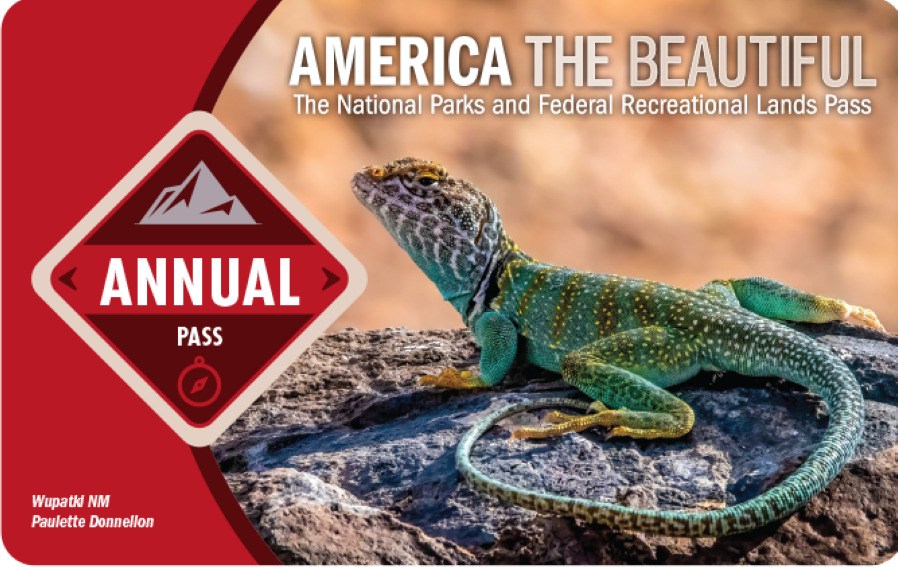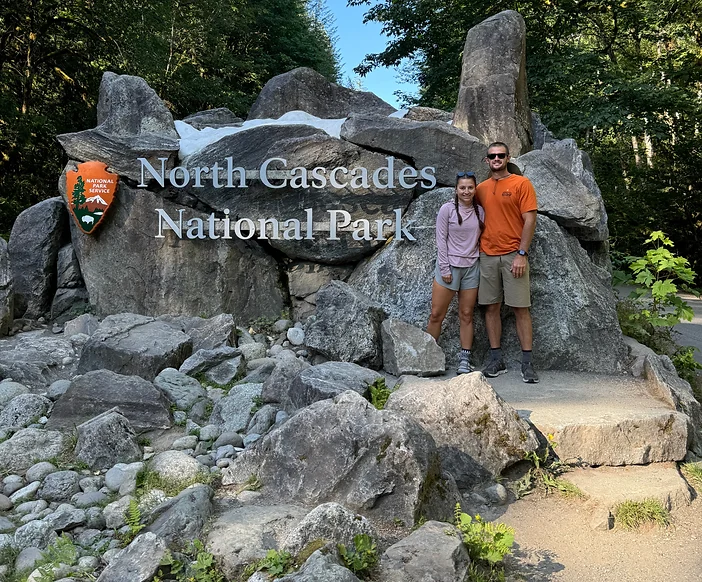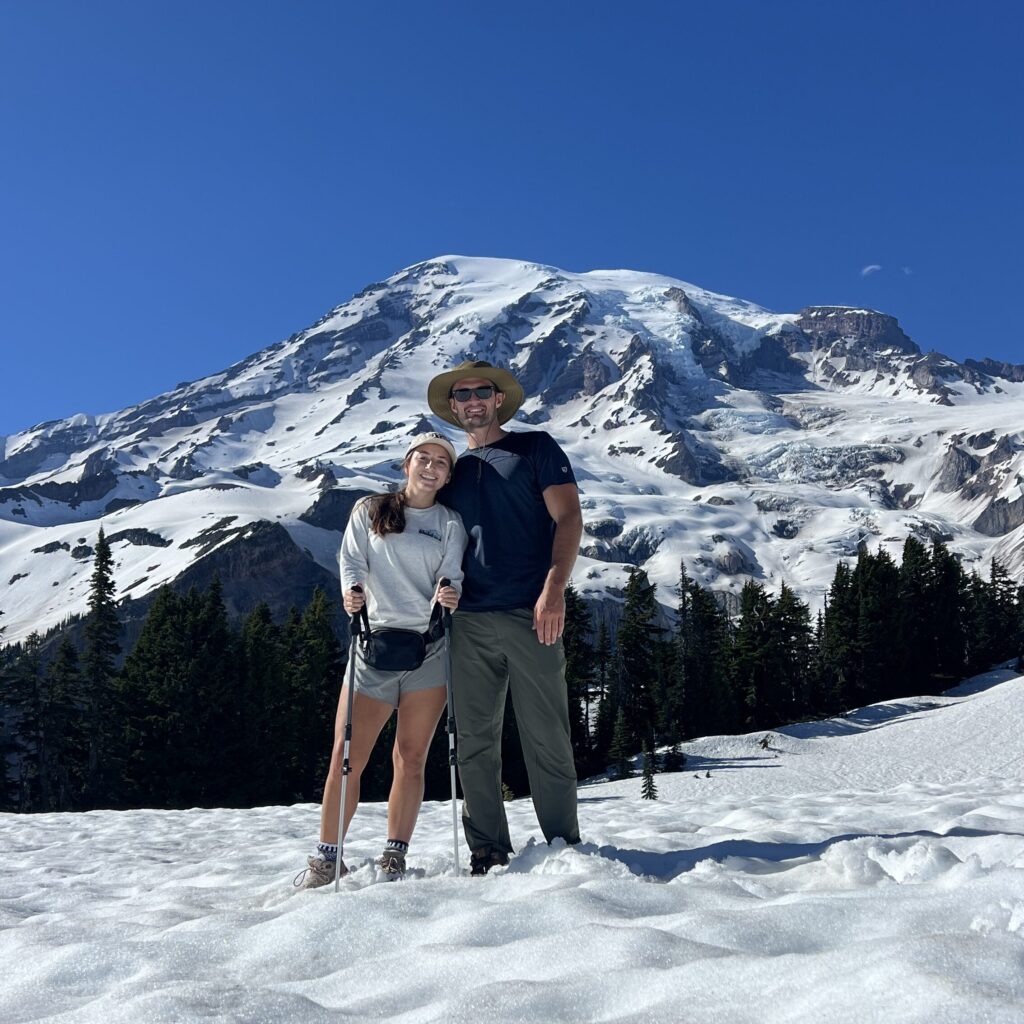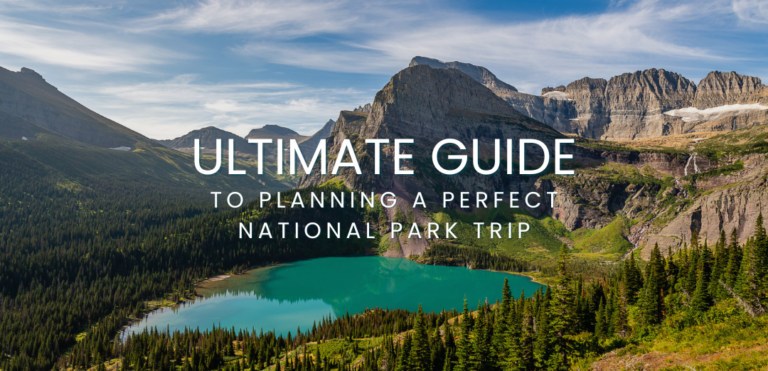Some of the links in this post are affiliate links, which means we may earn a small commission at no extra cost to you if you make a purchase through them. Thank you for supporting our adventures!
Planning a National Park Trip can be exciting, but without some pre-trip preparation, unexpected obstacles can quickly turn it into a stressful experience. Planning a National Park Trip requires attention to details like permits, passes, weather, and lodging to ensure a smooth adventure. From exploring nature’s most breathtaking landscapes to navigating potential hurdles, this step-by-step checklist will help you prepare properly. Whether you’re a seasoned park-goer or planning your first national park trip, these essential tips will maximize your time on the trails.
1. Purchase an America the Beautiful Pass
The America the Beautiful Pass is your golden ticket to over 2,000 federal recreation sites, including every U.S. National Park—a must-have for effective planning a national park trip. At $80, it’s a one-time purchase that covers entrance fees for an entire year, saving you money if you plan to visit more than two National Parks.

- How to Get One: The pass can be purchased online through the U.S. Geological Survey website, at REI stores, or at the entrance stations of most National Parks.
- Why It’s Worth It: Entrance fees at some popular parks can be $30-$35 per visit, so if you’re planning on visiting more than two parks in a year, this pass will quickly pay for itself.
- Pro Tip: The pass is per vehicle, so you can bring family or friends along without additional fees—making it even more budget-friendly.
2. Check for Extra National Park Reservations or Permits
Many popular National Parks have implemented timed entry reservations or additional permits to manage visitor numbers. This is super important for your National Park trip planning. Avoid getting turned away at the gate by securing these extra passes as early as possible.

- Examples of Parks That Require Extra Permits:
- Rocky Mountain National Park: Timed-entry permits are required during peak season.
- Glacier National Park: Reservations are needed to access Going-to-the-Sun Road.
- Mount Rainier National Park: Entrance to Sunrise and Paradise Corridors have timed entry during peak season until 3pm.
- Other Parks: Zion (Angels Landing), Acadia (Cadillac Summit), and Haleakalā (summit sunrise).
- Pro Tip: Check the specific park’s website for the most up to date information regarding permits and timed entry.
- Backcountry and Camping Permits: For those planning to camp or hike in the backcountry, permits are required at several parks, including the Grand Canyon, Great Smoky Mountains, and Yellowstone.
- How to Reserve: Use the website Recreation.gov for reservation availability and booking instructions.
Quick Tips for Hard-to-Get Permits: – Book as soon as slots open—usually months in advance. – Set alerts or reminders on Recreation.gov for any permit cancellations. – Consider visiting during shoulder seasons (early spring or late fall) when demand is lower.
3. Check the Weather for Your Planned Visit Dates
Weather can vary dramatically within National Parks due to changes in elevation and season. Checking the forecast in advance will help you pack appropriately, avoid surprises, and master planning a national park trip.

- Mountain Parks: For parks like the Great Smoky Mountains or Rocky Mountain National Park, weather can shift rapidly, so bring layers and prepare for rain or snow, even in spring or fall.
- Desert Parks: Death Valley, Joshua Tree, and Saguaro experience extreme heat during summer months. Plan to hike in the early morning and have plenty of water if visiting in warmer seasons.
- Coastal and Rainy Parks: Parks like Olympic and Acadia can be wet for long stretches, especially in fall and winter, so pack waterproof gear and check for potential flooding or trail closures.
Top Resources: – National Weather Service: For reliable, location-specific forecasts. – Weather Apps: MyRadar, Weather Underground, and AllTrails provide localized weather reports, some even with trail conditions updated by other hikers.
4. Research Lodging Options Early When Planning a National Park Trip
Lodging inside National Parks can book up fast, especially during peak seasons, so planning a national park trip in advance is crucial. Also, exploring nearby towns can offer additional (and sometimes more affordable) options.
- Inside the Park vs. Nearby Towns:
- Staying Inside the Park: Offers early access to trails, sunrise viewpoints, and reduced driving time. Most parks have a mix of lodges, cabins, and campgrounds, though these often fill up months in advance.
- Nearby Towns to Consider: Moab for Arches and Canyonlands; West Yellowstone for Yellowstone; Bar Harbor for Acadia; Gatlinburg for Great Smoky Mountains.
- Alternative Lodging Options: Look into camping, RV spots, and dispersed camping on BLM (Bureau of Land Management) land or in National Forest areas surrounding the parks.
- Booking Tip: For park accommodations, use sites like Xanterra and NPS Lodging. Book as early as possible—many locations allow reservations up to 13 months in advance.
5. Plan Your Route & Determine the Best Times When Planning a National Park Trip
Knowing how to navigate within a park can help you maximize time at popular areas and avoid delays from traffic or limited parking.
- Plan for Drive Times: Larger parks like Yellowstone and Yosemite can require hours of driving, so plan your route in advance to visit each spot efficiently.
- Best Times to Avoid Crowds: Visit popular trails and viewpoints early in the morning or near sunset. Some parks even have shuttle services (e.g., Zion) to help reduce parking hassle.
- Road Closures: Certain parks, especially those with mountain roads (like Glacier and Yosemite), close some routes during winter, so check the NPS site for up-to-date information.
6. Pack with the Park’s Terrain and Weather in Mind
Packing appropriately for your destination is essential to enjoy a safe and comfortable experience.
- Weather-Specific Packing: Be prepared for temperature fluctuations with layers, waterproof jackets, and proper footwear.
- Hiking Essentials: Bring navigation tools (maps or GPS), plenty of water, and high-energy snacks. For rugged terrain, consider trekking poles and sturdy boots.
- Safety Gear: Carry a first-aid kit, a small multi-tool, and, in areas with limited cell service, an emergency communication device like a satellite phone or personal locator beacon.
7. Make a Checklist for Local Area Amenities and Resources
Knowing the available amenities in the park and surrounding areas will help you avoid common inconveniences.
- Gas, Food, and Supplies: Some parks, such as Big Bend and North Cascades, have limited or no on-site options for food and fuel, so stock up beforehand or research the nearest options.
- Emergency Facilities: Familiarize yourself with the location of ranger stations, visitor centers, and emergency contacts.
- Offline Maps: Download maps in advance on apps like Gaia GPS, AllTrails, or Google Maps for reliable navigation even in areas without cellular service.
Mastering Planning a National Park Trip for an Amazing Adventure
A bit of preparation can make all the difference in Planning a National Park Trip, ensuring a memorable and seamless experience. By following this checklist, you’ll be equipped to handle any situation that may come your way—from weather surprises to fully-booked lodges. So get ready, grab your America the Beautiful Pass, secure those permits, and set out for an adventure of a lifetime. With a little planning, you’re free to focus on the beauty, exploration, and excitement of your next adventure.
A little preparation goes a long way in ensuring Planning a National Park Trip is stress-free and unforgettable. But planning doesn’t stop at packing and permits—timing your visit can be just as important! Want to know the secrets to avoiding crowds and enjoying the most serene park experiences?Check out our guide on How to Avoid Crowds at National Parks for insider tips on timing, lesser-known trails, and strategies to make the most of your adventure. Maximize your experience by combining smart planning with crowd-free exploration!

